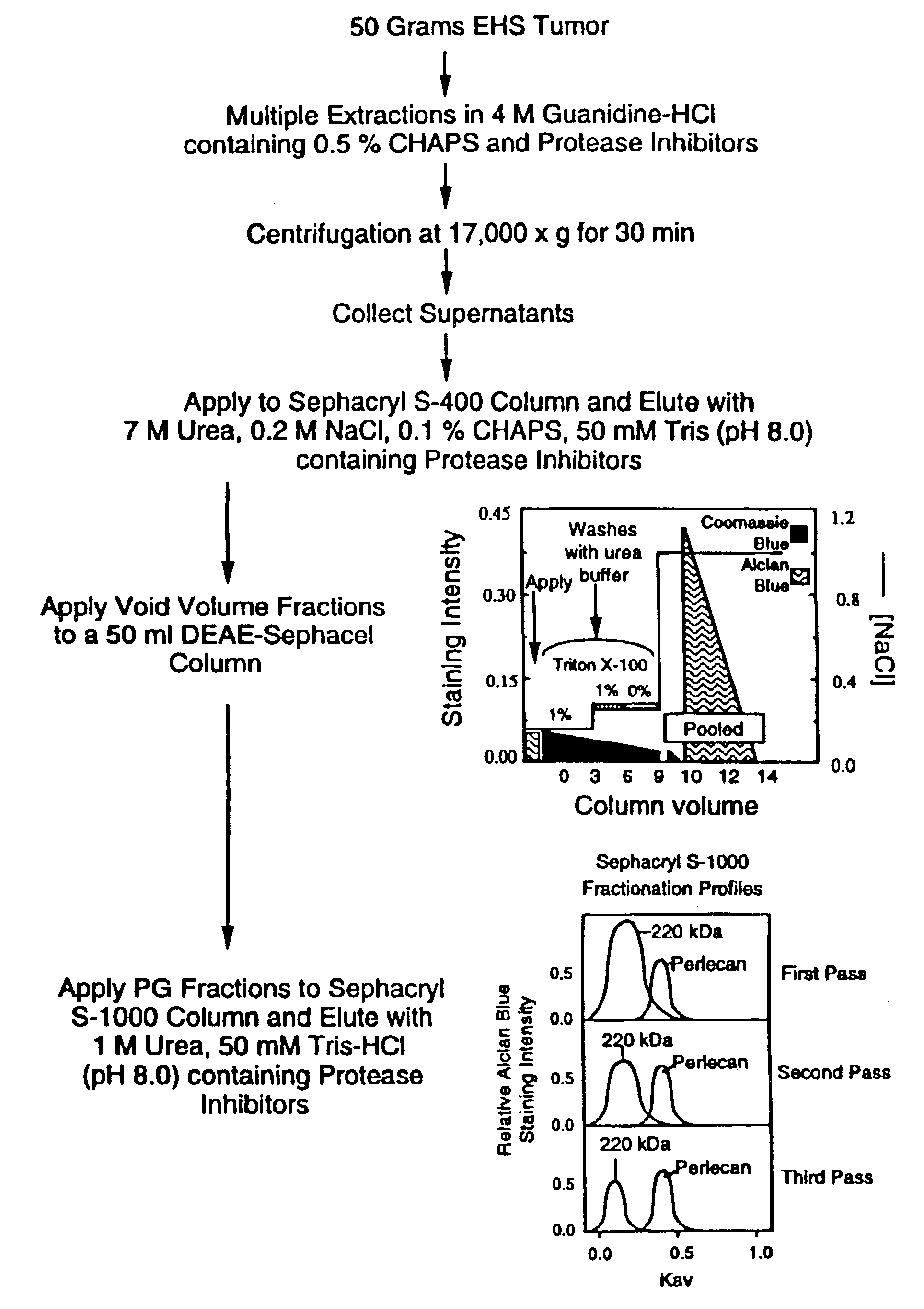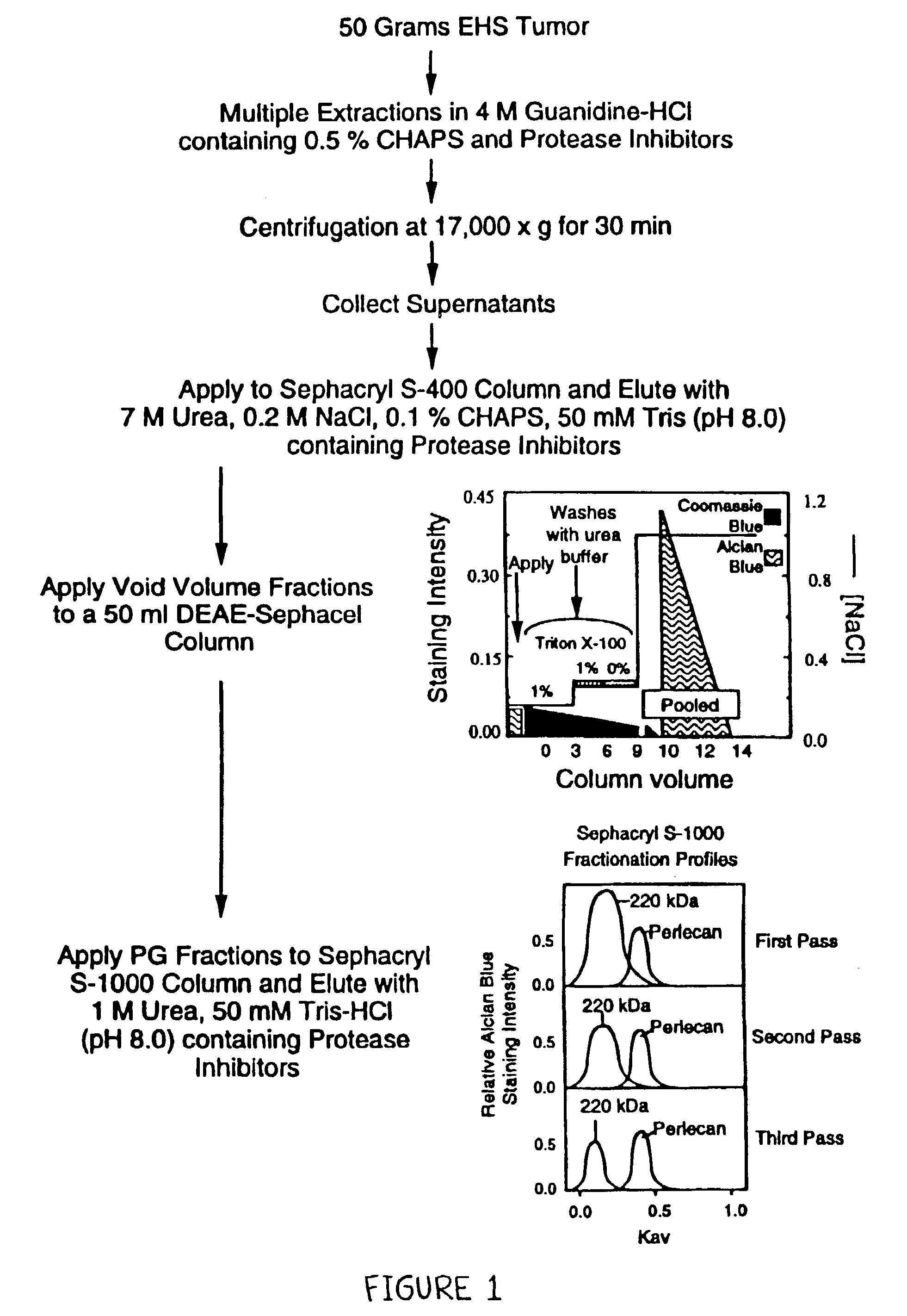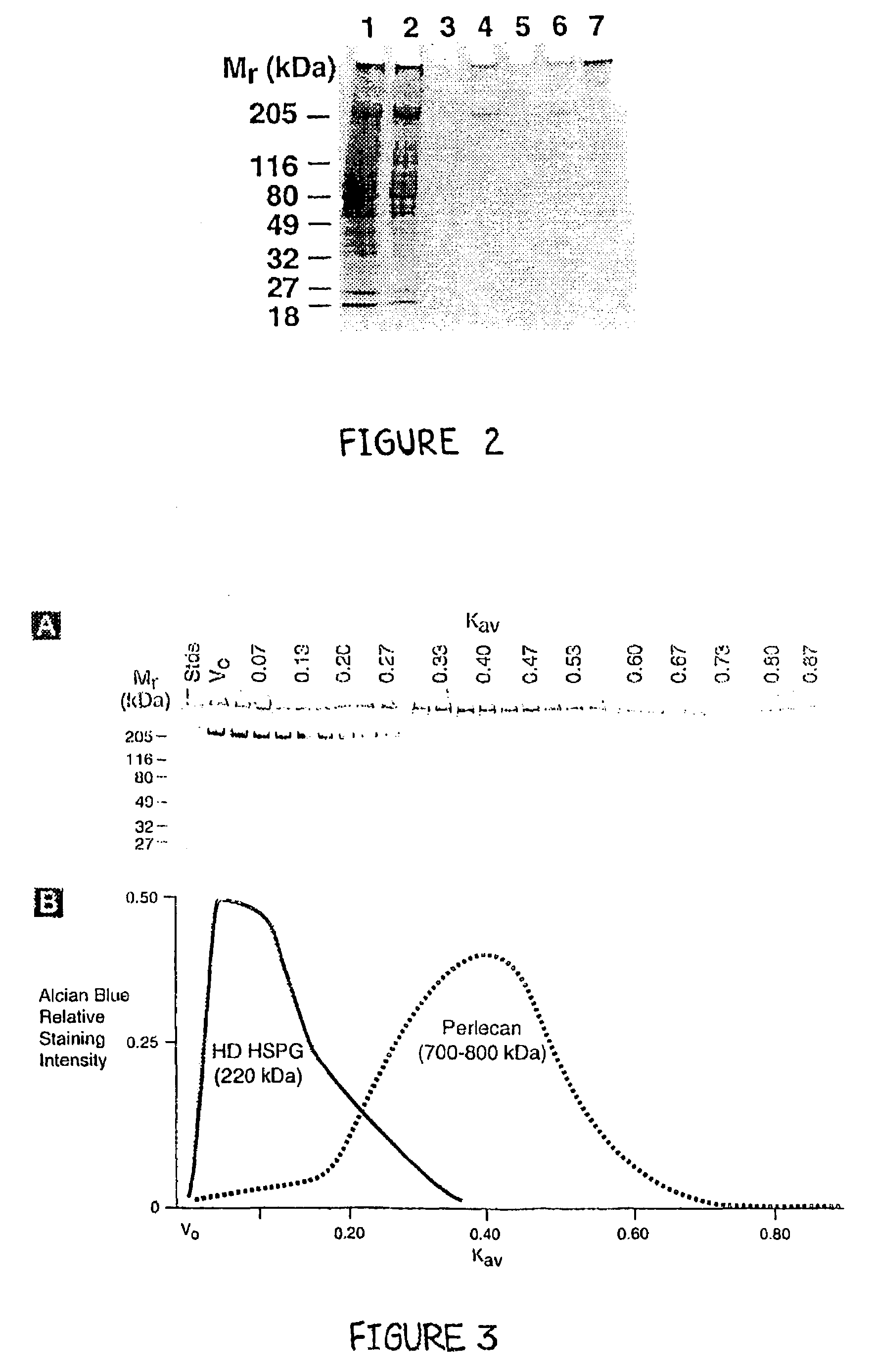Methods for producing pure perlecan and other heparan sulfate proteoglycans
a technology of heparan sulfate and proteoglycan, which is applied in the direction of peptides, plant/algae/fungi/lichens ingredients, biological material analysis, etc., can solve the problem of difficult to isolate perlecan in “pure” form and in sufficient quantities
- Summary
- Abstract
- Description
- Claims
- Application Information
AI Technical Summary
Benefits of technology
Problems solved by technology
Method used
Image
Examples
example 1
Perlecan Purification from the Engelbreth-Holm-Swarm Tumor
[0066]FIG. 1 shows a protocol for perlecan purification from the EHS tumor. The EHS tumor was maintained in the right or left hind leg muscle of C57Bl mice following injection of tumor cells as previously described (Swarm, J. Natl. Cancer Inst. 31:953–975, 1963; Swarm et al., J. Natl. Cancer Inst. 33:657–672, 1964; Orkin et al., J. Exp. Med. 145:204–220, 1977). The tumors were usually maintained in the mice hind legs for 3–4 weeks usually attaining a growth of approximately 3–4 grams. In accordance with National Institute of Health (Bethesda, Md., USA) Animal Care and Use Guidelines, the animals were sacrificed by lethal injection of Nembutal (0.50 ml of 50 mg / ml solution per mouse), before the tumor tissue reached an approximate weight of 4 grams. EHS tumor tissue was harvested from the mice as previously described (Orkin et al., J. Exp. Med. 145:204–220, 1977). All extraction steps (described below) were carried out by agit...
example 2
Analysis at each Step of the Perlecan Isolation Procedure
[0076]In order to determine the effectiveness of our perlecan isolation protocol, the presence of perlecan, other PGs and non-PG proteins were monitored at each step of the isolation method (FIG. 1). As shown in FIG. 2 lane 1, the 4M guanidine-HCl extracts contained two major PGs which were detected by Alcian blue staining (blue bands). These included a high Mr PG, believed to represent perlecan (at the interface of the resolving gel), and a 220 kDa PG, believed to represent the high density HSPG, previously reported (Fujiwara et al., Eur. J. Biochem. 143:145–157, 1984; Hassell et al., J. Biol. Chem. 260:8098–8105, 1985). The guanidine-HCl extraction protocol recovered>90% of GAGs as determined using an quantitative Alcian blue staining assay (Björson, Anal. Biochem. 210:282–291, 1993).
[0077]In addition to the two major PGs (described above), the guanidine-HCl extracts contained many non-PG proteins as shown by Coomassie blue ...
example 3
Assessment of Purity of Final Perlecan Preparations by Silver and Alcian Blue Staining
[0080]The purity of perlecan that was obtained in the final preparations were evaluated for quality. For these analyses, a combination of silver staining, alcian blue staining and western blotting were employed (as described below) on aliquots of purified perlecan. In order to determine that no significant quantity of other proteins were present in our final perlecan preparations, silver staining of SDS-PAGE gels were first used. For these studies, 6.25 μg aliquots (determined by Lowry) of perlecan were separated on 4–12% gradient SDS-PAGE gels under reducing conditions and stained with silver (see Materials and Methods). As shown in FIG. 4A, perlecan was observed at the resolving gel interface, with no other lower Mr bands present. This observation indicated that our final perlecan preparations did not contain any contaminating proteins with a Mr<700–800 kDa (detectable by silver staining).
[0081]T...
PUM
| Property | Measurement | Unit |
|---|---|---|
| Percent by mass | aaaaa | aaaaa |
| Percent by mass | aaaaa | aaaaa |
| Atomic weight | aaaaa | aaaaa |
Abstract
Description
Claims
Application Information
 Login to View More
Login to View More - R&D
- Intellectual Property
- Life Sciences
- Materials
- Tech Scout
- Unparalleled Data Quality
- Higher Quality Content
- 60% Fewer Hallucinations
Browse by: Latest US Patents, China's latest patents, Technical Efficacy Thesaurus, Application Domain, Technology Topic, Popular Technical Reports.
© 2025 PatSnap. All rights reserved.Legal|Privacy policy|Modern Slavery Act Transparency Statement|Sitemap|About US| Contact US: help@patsnap.com



